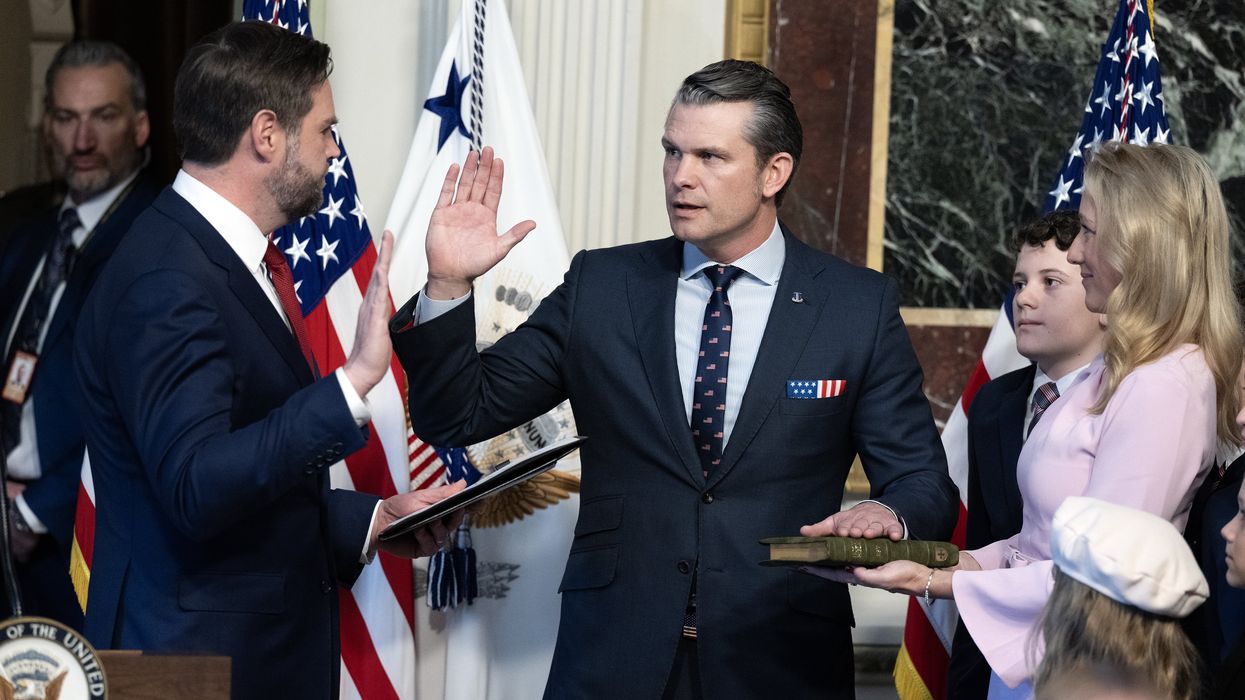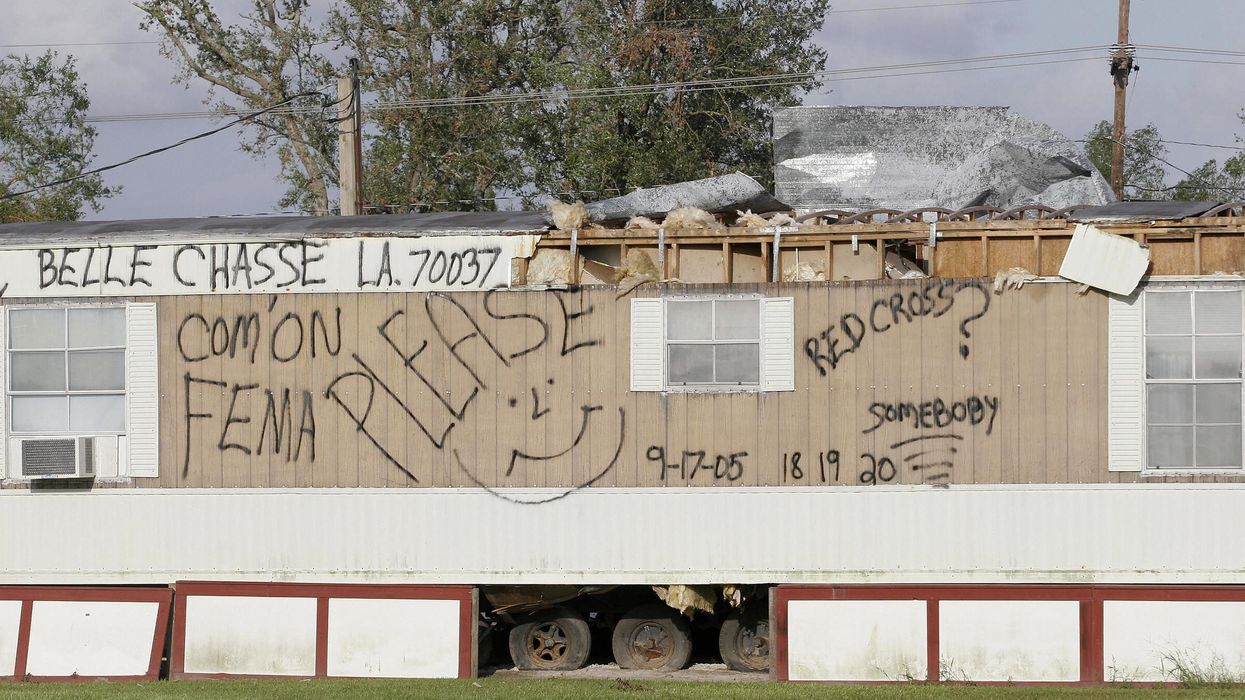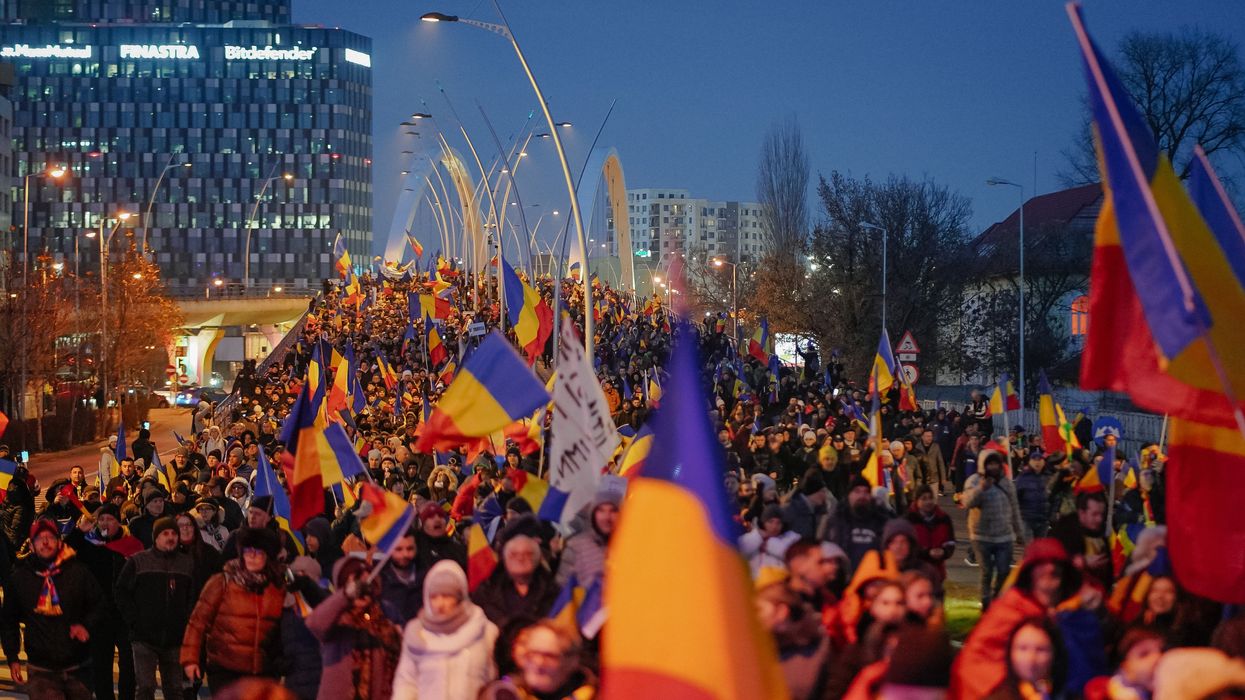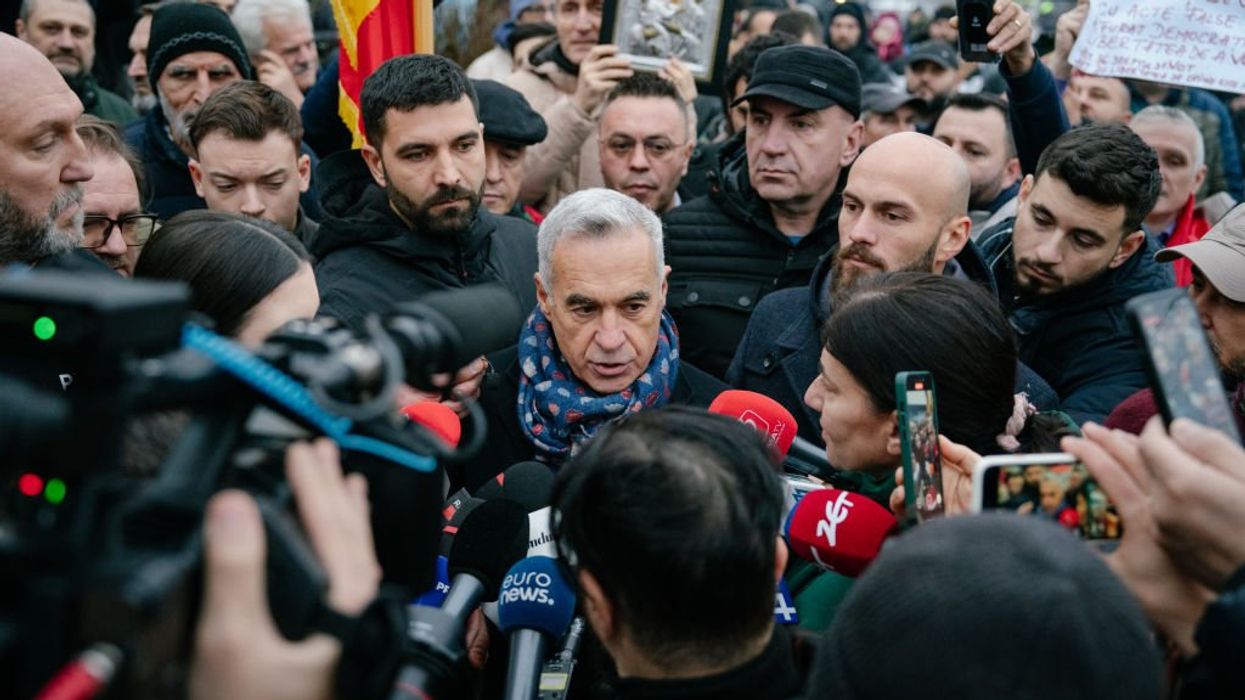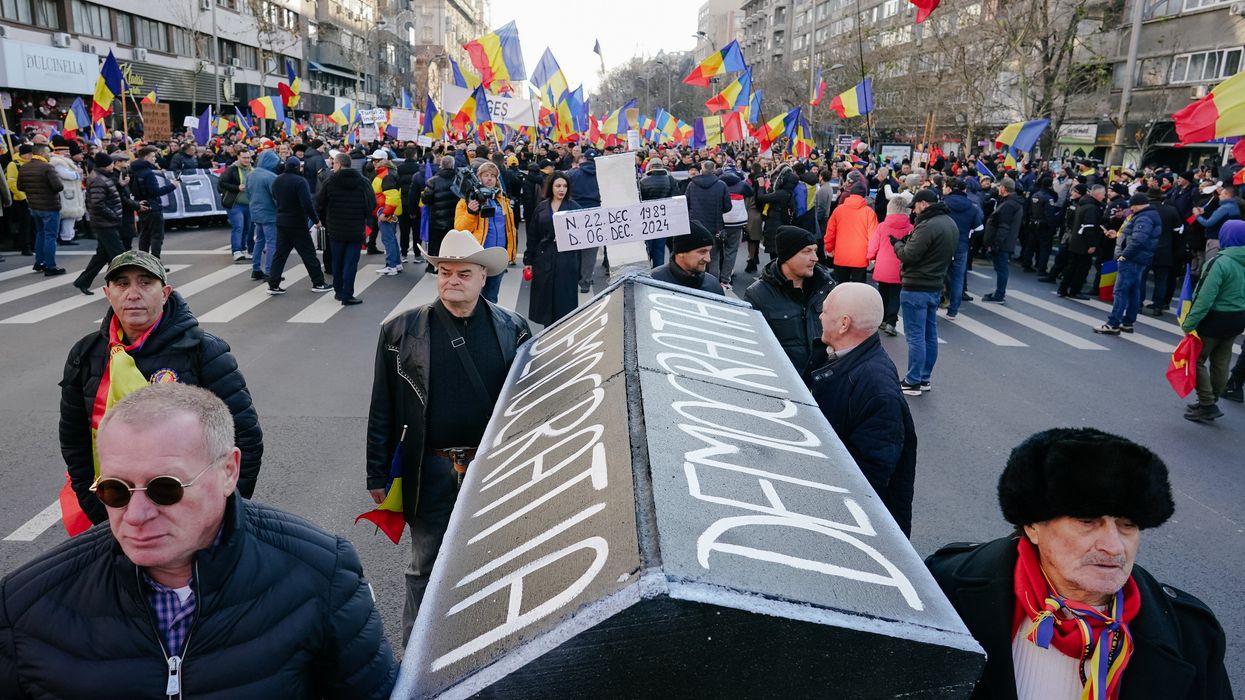A previously unknown connection between the 1500s and the 1900s may have been discovered today on The Glenn Beck Program. Rather than focus on the news of the day, Glenn brought up random moments from history like Cat Nuns and the Dance Plague of 1518.
"It killed 15 people a day. Historical documents, including physician notes, cathedral sermons, local regional chronicles, even the notes issued by the Strasbourg City Council are clear that the victims danced. It is not known why the people danced, even though they danced, some of them, to their death," Glenn read.
RELATED: Glenn’s New History Program: It’s Not the Dates or the Names — It’s the Story
Ever the comparative historian, co-host Stu-Burguiere made a curious observation.
"If I'm understanding the story right, historically, this is what created the Safety Dance, which was, We can dance, We can dance, Everybody look at their hands. Why do you have to look at your hands? Because people were falling over," Stu said.
Read below or listen to the full segment for answers to these curious questions:
• Did meowing nuns have anything to do with the dance plague?
• Was it well water or LSD-like fungi that caused the deadly dancing?
• Is it safe to look at your hands while dancing?
• If your friends don't dance, are they still friends of yours?
• Is the Safety Dance video a documentary about the Dance Plague of 1518?
Listen to this segment, beginning at mark 1:26:16, from The Glenn Beck Program:
Below is a rush transcript of this segment, it might contain errors:
GLENN: But this story is good. How about this one? How about the Dancing Plague? Have you ever heard of the Dancing Plague?
JEFFY: Yes.
GLENN: Now, this is the dancing plague I believe of Prague.
PAT: Is this about disco in the '70s?
GLENN: No, it is not.
JEFFY: No, it is not.
GLENN: Sorry, this is Strasbourg, and this is the Dancing Plague of 1518. You know this?
PAT: Okay.
JEFFY: Horrible. I do. I'm familiar with this Dancing Plague.
GLENN: How many think he's lying?
The outbreak in July 1518 when a woman began to dance in the streets of Strasbourg. That lasted somewhere between four and six days. But by the end of the week --
PAT: Wow.
GLENN: -- 34 other people had joined in.
PAT: Like non-stop she danced?
GLENN: Non-stop dancing. Yes.
Thirty-four others had joined in by the end of the week. And within a month, there were 400 dancers. Most of them were female, dancing non-stop in the streets of Strasbourg.
Here's where it gets weird --
PAT: Oh, it's not yet?
JEFFY: It's not.
STU: Oh, okay.
GLENN: Suddenly, they heard meowing from -- no. People actually died from heart attacks, strokes, and dropped dead from exhaustion.
JEFFY: But the surrounding dancers kept going.
GLENN: Yes. It killed 15 people a day. Historical documents, including physician notes, cathedral sermons, local regional chronicles, even the notes issued by the Strasbourg City Council are clear that the victims danced. It is not known why the people danced, even though they danced some of them to their death.
JEFFY: Right. Yeah, they think they know what caused it now though.
PAT: Prozac? Was it Prozac in the water?
JEFFY: It was during the plague day, and actually they believed it was in the well water surrounding the town.
PAT: Yeah. And they were eating the fish.
JEFFY: Surrounding the town.
GLENN: As the Dancing Plague worsened, concerned nobles sought the advice from physicians who ruled out astrological and supernatural causes. They said this plague was of natural disease caused by hot blood. They decided not to bleed the people who were dancing.
PAT: Foreigner sang about that.
GLENN: Instead, they encouraged more dancing.
PAT: Wow.
GLENN: And they built a wooden stage for the dancers. They believed that if they would dance all day and all night, they would eventually wear themselves out and stop dancing.
JEFFY: And in which they did, they died.
GLENN: Yes.
STU: If I'm understanding the story right too, historically, this is what created The Safety Dance, which was --
GLENN: Wow, we're --
PAT: If you have any lyrics to that, I will be impressed, without looking it up.
STU: We can dance, we can dance, everybody look at their hands. Why do you have to look at your hands? Because people were falling over.
PAT: Right.
STU: You wanted to make sure your hands were always in front of you to brace an impact that would lead to death.
PAT: Okay.
STU: We can dance, we can dance.
PAT: It wasn't everybody look at your pants?
STU: See, so it was okay for people to take chances on dancing once the safety dance was there, and that's what they were trying to encourage people: We can dance.
PAT: Okay. Yeah.
STU: Everybody is taking a chance. And that is -- directly relates --
GLENN: It might have been that or ergotamine, which I guess is a product of the ergot fungi, which grows in grain.
PAT: I think it's an actual disease that caused --
GLENN: No, they think that it was some sort of fungus that was in the grain that is a relation of LSD.
PAT: Oh.
GLENN: And so they were eating the grain, and they --
PAT: Well, that would make some sense, right? That they're all hallucinating. But everybody in the village?
GLENN: Well, 400 people are doing it.
PAT: Did they all eventually die, or did some of them --
GLENN: No, some of them just stopped. Some of them just stopped. Some of them just stopped.
JEFFY: And two are still living today.
GLENN: Right.
PAT: Are they?
JEFFY: It was 1518. Yes, they all eventually died.
(laughter)
STU: Is it possible that The Safety Dance is actually about this?
GLENN: What?
JEFFY: I don't --
STU: I mean, the video was set in old-time like 1500s days.
JEFFY: Yes, it is. It is possible.
STU: And the lyrics actually seem to really fit with the story.
JEFFY: It is possible.
PAT: We can dance. We can dance.
STU: Is it possible?
GLENN: Give me the lyrics.
STU: Okay. Hold on. Let me give you this.
GLENN: That would be the greatest discovery of the day. That's an episode of The Vault right now.
By the way, The Vault premieres -- we're getting such tremendous feedback on His Story. Last night was episode two. If you haven't watched them, go binge on them at GlennBeck.com. There's two episodes out. Tesla and Edison, that are just fantastic. Huge great reviews for the people that are watching it, even people that are just so mad at me, they can't take it.
And tonight, The Vault premieres at 5 o'clock. You don't want to miss that. Another history show. Go ahead. Give me the --
STU: Okay. So we can dance if we want to. We can leave your friends behind. Again, there's people dying all over the place.
JEFFY: Yeah. Yeah.
STU: Because if your friends don't dance, and if they don't dance, well, they're no friends of mine.
So people are saying specifically to the people --
GLENN: I don't.
STU: -- people are dying, don't dance. And they're saying, you know what, you're not a friend of mine.
PAT: Right.
GLENN: I don't --
STU: I say, we could go where we want to, a place that they will never find. Again, they're having to hide this activity because of all the death.
GLENN: They're in the middle of the street.
STU: Well, I mean, but it's in a place they will never --
GLENN: They're in the middle of the street. How can they not find --
STU: Right. But it's a street other people aren't around.
JEFFY: Look, the Guys Without Hats may have taken some liberties.
GLENN: Right. Okay. Go ahead. Where does it start fitting --
STU: So far, it's pretty much identical. It's like a freaking documentary.
(laughter)
PAT: We need the greatest mind of all time.
GLENN: I will tell you, you had me excited there for a second because you were so sincere. You were like, "I think this is it."
STU: Wait. Where did this happen again?
GLENN: Strasbourg. That's -- what is that -- Austria?
PAT: Austria.
STU: I mean, this happened in Europe too.
(laughter)
STU: This is pretty clear, guys.
PAT: Is it clear?
STU: I think it's pretty clear.
GLENN: Give me some other --
STU: We can dance if --
GLENN: We got that.
STU: A lot of it is that. Let's see.
GLENN: Have anything about fungi?
STU: It does go into -- that's in --
GLENN: It goes into -- and we just had a big glass of wheat --
STU: How about this? We can dance if we want to, we've got all your life and mine. As long as we abuse it, never going to lose it.
Again, they're talking trash to these doctors that are coming out and saying that the dancing is killing people. Everything will work out right. He's advocating for this policy, which is against the common --
GLENN: When did you stop believing you had found the link? Because now -- because there was a second where you really did think, this might be it.
PAT: It's when he read past the first line. That's when he stopped.
STU: Well, the video is from that era, right?
GLENN: Right. I don't know that.
STU: You don't know the video?
GLENN: I don't know the video.
STU: The video never made sense. Look at the -- we're showing the video here on the other side of the room.
GLENN: So is that like 1600s? Fifteen hundreds?
STU: Fifteen hundreds. 1600s. I would say almost definitely. It's in the same region of the world.
GLENN: What else could it be?
STU: Well, I just -- I thought maybe you brought up a story that other people knew. But I should have known, no.
GLENN: This from the guy who just brought up the cat meow nuns.
STU: This is clearly the same story. People are clearly -- they're dancing in a safe manner in the 1500s in Europe. I mean, this is obviously the same story, guys.
(sighing).
STU: You know, deny all you want. Deny this. Deny the gay frogs. Deny the fish people. Deny the shrimp walking up to birds --
GLENN: I am the one who told you about the cat nuns.
STU: You did -- you did bring up the cat nuns, but that was to divert from the shrimpicide.
GLENN: And now, this.
STU: There's a sentence that you didn't think you would hear on radio today.
(laughter)
Featured Image: Screenshot of the music video for the Men Without Hats hit song Safety Dance.




